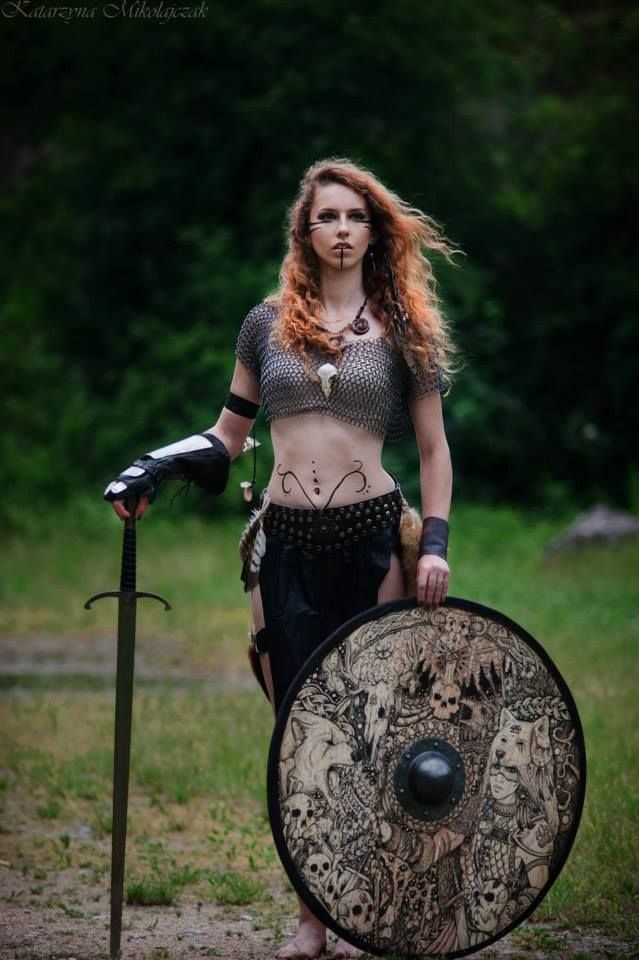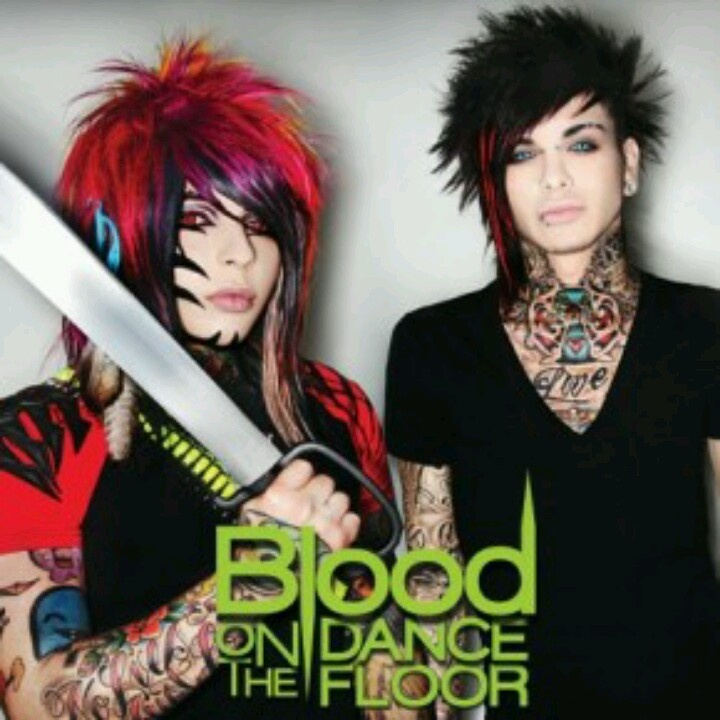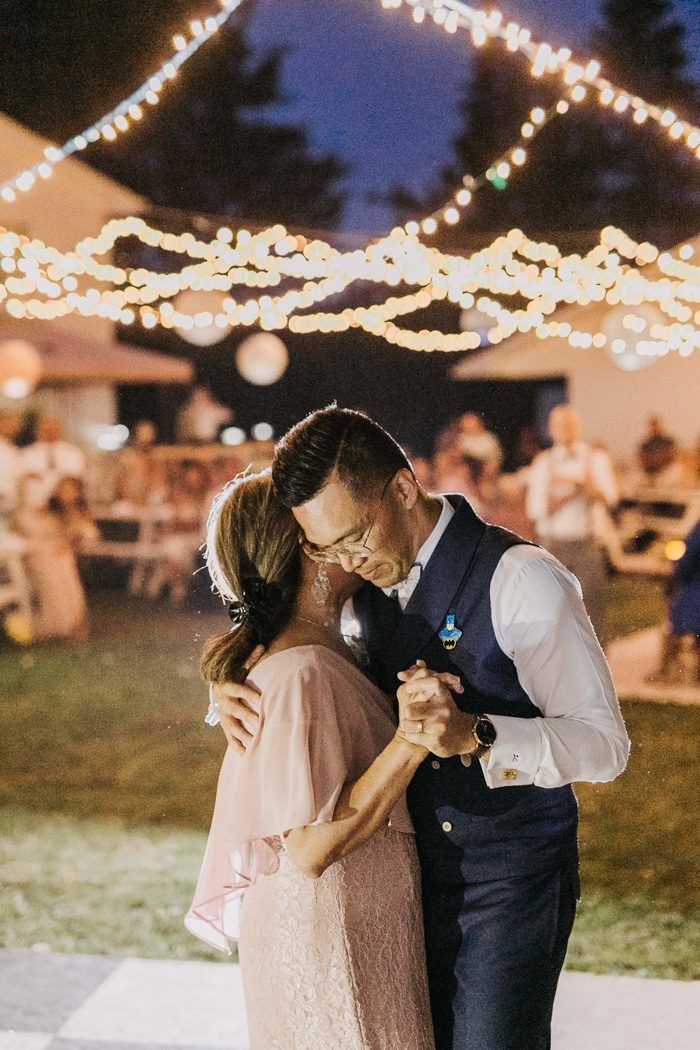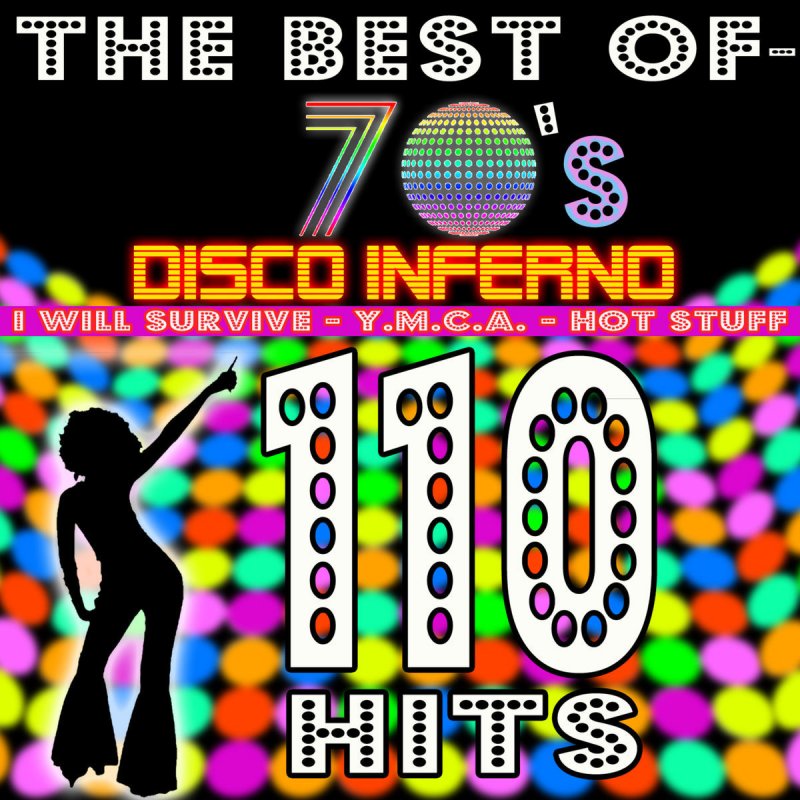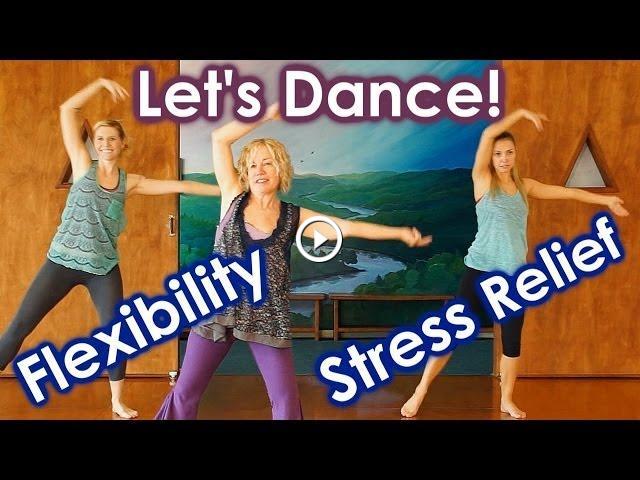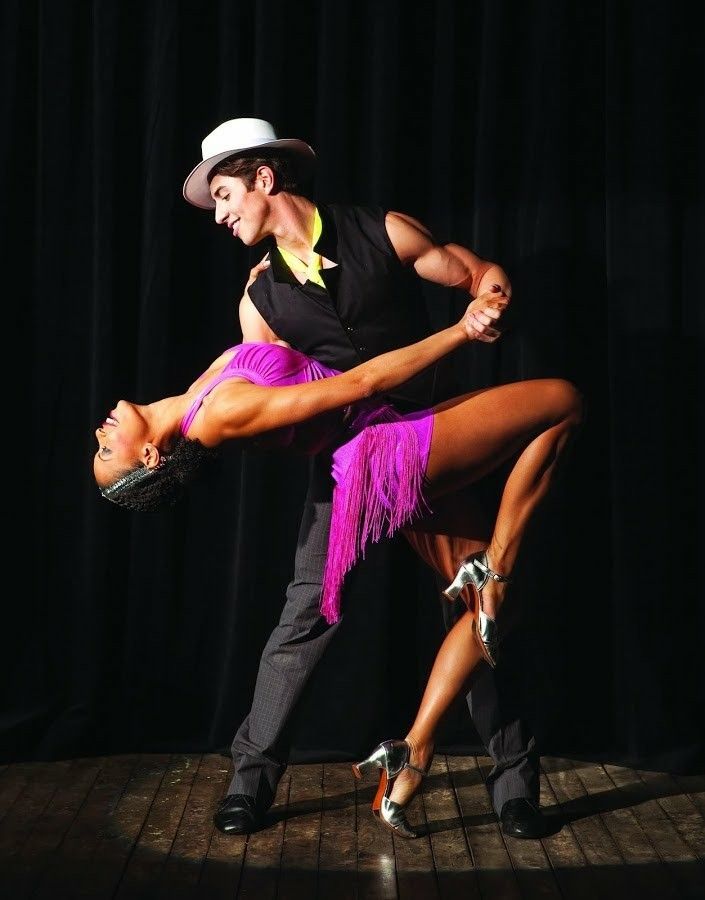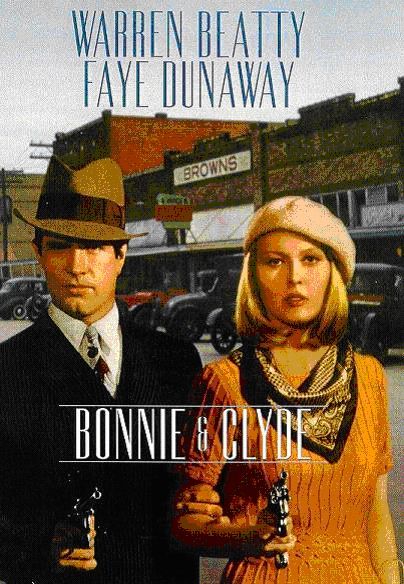How to celtic dance
Irish Dance: History, Music, Styles, Steps, Dresses, Shoes
Irish dance or Irish dancing is traditional Gaelic or Celtic dance forms that originated in Ireland. It can be performed as a solo or in groups of up to twenty or more trained dancers. In Ireland, Irish dance is part of social dancing or may be for formal performances and competitions.
It is performed traditionally with intricate foot work and is most known for the dancers performing with a stiff upper body. Unlike other dance forms, Irish dancers do not move their arms or hands so that footwork is accented.
CONTENT
The History of Irish Dance
The history of Ireland is also the history of Irish Dance. The actual dates of its origin has never been determined specifically. However, Irish history is steeped in Druidic, Celtic and other religious history which affected the origins of Irish dance. For example, processionals in Druidic and Celtic religious practices required precision movement as do Irish reels and jigs.
The Celts are a 2,000 year old civilization that brought with them their own folk dances. Many of their dances were comprised of circular formations around sacred trees or they consisted of certain patterns performed by males and females in a religious rite.
If there has been any influence in Irish Dance, it may have been the Quadrille. Ireland has been a country of many travelers who brought with them various continental dance styles. The Quadrille was one of these styles that impacted Irish dance.
The Quadrille was popular across Europe in the 18th and 19th centuries when royalty held balls and cotillions. Although, the Quadrille was popular toward the end of the 18th century and spread to England and Ireland around the early 19th century.
A Quadrille is a square dance performed by four couples. It contains five choreographic figures.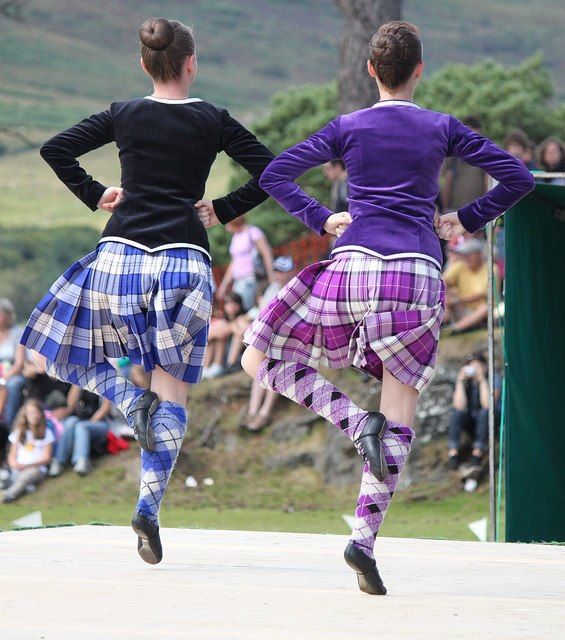 Each of these figures is a complete dance sequence of itself. Thus, it is easy to see how Irish reels became a prominent part of Irish dance.
Each of these figures is a complete dance sequence of itself. Thus, it is easy to see how Irish reels became a prominent part of Irish dance.
Musical instruments like the Irish Bodhran (drum), fiddle, concertina, accordian, Uiliean pipes, Celtic harp, tin whistles and banjo form the background of Irish dance music
Irish Dance Costumes, Dresses and Shoes
In the early days of Irish dance the dance costumes for females were basically ankle length dresses or blouses and skirts. For male dancers, costumes might have consisted of a shirt with a kilt in the Irish clan plaid or it may have been a long coat, shirt, vest and briques (calf length pants) with leggings.
Modern Irish dancers and dancers performing in traditional Celtic dance wear several different costume styles.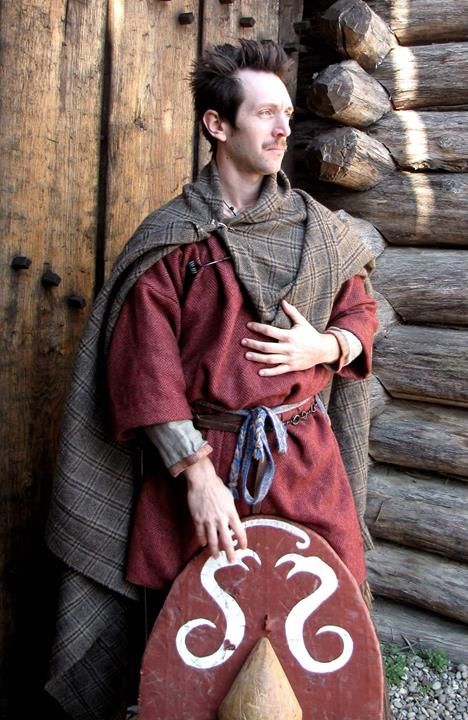 For Traditional Celtic dance, female dancers wear blouses and long skirts while the male dancers perform with traditional shirt and kilt.
For Traditional Celtic dance, female dancers wear blouses and long skirts while the male dancers perform with traditional shirt and kilt.
Modern Irish female dancers perform in beautiful short dresses in bright colors, mostly always with their arms fully covered. Modern Irish male dancers perform in trousers and a shirt with a colorful sash tied at the waist.
Shoes for male Irish dancers depends on the type of dance they are performing. For Flat Down step dancing, shoes have metal cleats on the toes and heels. For Ballet Up dance, shoes for males have soft soles.
Female dancers wear black leather "Ghillies" that have soft soles for flexibility for Ballet Up steps. The soft leather of Ghillies help Irish dancers perform dance steps either on the balls of the feet or on tips of their toes.
Female Irish dancers wear two basic types of shoes. For Flat Down step dances, shoes are an oxford style with a thick heel with metal cleat attached to the full heel and a thick frontal sole that also has a metal cleat attached. The oxford is usually black leather, has laces and a leather strap to secure the shoe to the foot.
For Flat Down step dances, shoes are an oxford style with a thick heel with metal cleat attached to the full heel and a thick frontal sole that also has a metal cleat attached. The oxford is usually black leather, has laces and a leather strap to secure the shoe to the foot.
Irish Dance Styles & Types
In total, there are six Irish dance styles. However, it is equally important to note that within each of the six Irish dance styles, there are basically only two dance style techniques, these are known as Ballet Up and Flat Down. These describe how Irish dancers use their feet in the six styles.
Ballet up describes a balletic style where toes are pointed and steps are performed high on the balls of the feet or on tips of the toes. Body weight is lifted upward from the floor.
Flat Down describes a technique that relies more on the use of the heels in a flat, gliding motion.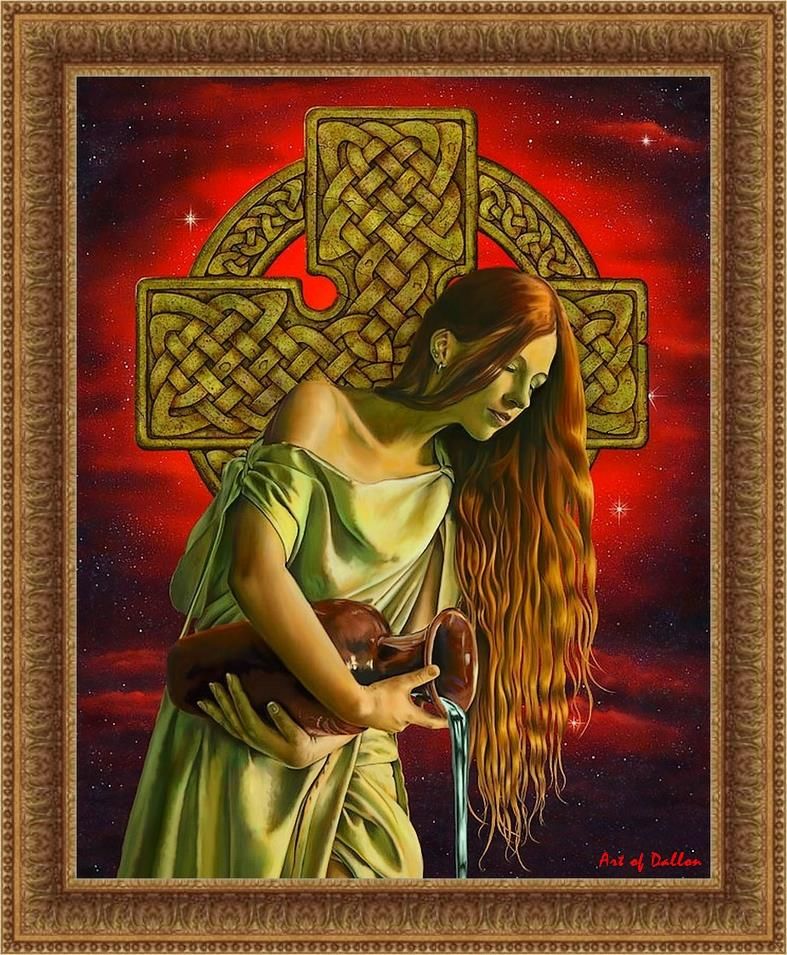 Body weight sinks downward into the floor to emphasize the sound of the metal cleats.
Body weight sinks downward into the floor to emphasize the sound of the metal cleats.
The six Irish dance styles include:
- Traditional Irish Step Dancing - only the legs and feet move in flat down technique
- Modern Irish Step Dancing - full body movement with ballet up technique
- Irish Set Dancing - with Flat Down technique
- Irish Ceili Dancing - with Ballet Up technique
- Irish Sean Nos Dancing - with Flat Down technique
- Irish Two Hand Dancing - with Flat Down technique
Traditional Irish Step
Traditional Irish Step dancing is performed by male and female dancers in long lines, circles, squares or as partnered reels. Traditional Iris Step Dancing consists of dances set to traditional Irish music with a fast tempo that dancers are required to perform sets of steps to.
For example, two groups of dancers face opposite each other and shuffle, hop, jump, tap and stamp to the music as they more toward each other. Dancers then move between the dancers of the opposite line and then back to their original position. This is often referred to as a "competition" line dance.
Dancers then move between the dancers of the opposite line and then back to their original position. This is often referred to as a "competition" line dance.
Modern Irish Step Dancing
Modern Irish Step dancing has female dancers performing ballet up dance movements like leg swings, hopping and jumping or sashaying to the music. The female dancers perform in soft ghillies while the male dancers are heard tapping in Oxford tap shoes to the music Modern Irish Step Dancing
Modern Irish Step dancing has female dancers performing ballet up dance movements like leg swings, hopping and jumping or sashaying to the music. The female dancers perform in soft ghillies while the male dancers are heard tapping in Oxford tap shoes to the music.
Irish Set Dancing
Irish Set Dancing, as its name implies consists of dances performed in "sets.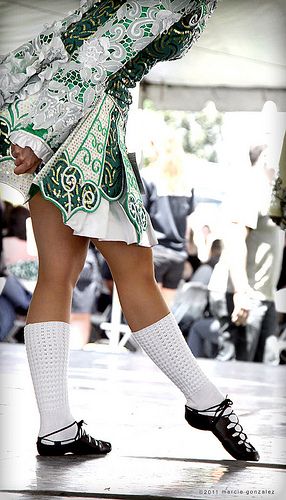 " For example, a performance of Irish Set Dances may be part of a whole choreographed dance performance that is broken up into several separate parts. The set usually requires dancing in couples in four sets.
" For example, a performance of Irish Set Dances may be part of a whole choreographed dance performance that is broken up into several separate parts. The set usually requires dancing in couples in four sets.
The Set Dance begins with all four couples dancing to the same choreography. This is followed by each couple performing the same sets as individual couples.
Irish Ceili Dancing
Irish Ceili (pronounced "kay-lee) Dancing is a very traditional dance form. It originated in the 1500's and is always performed to traditional Irish music. The Ceili Dances consist of quadrilles, reels, jigs and long or round dances. These were the most native Irish traditional folk dances.
Irish Sean Nos Dancing
Irish Sean Nos Dancing is one of the oldest of the traditional Irish dance styles.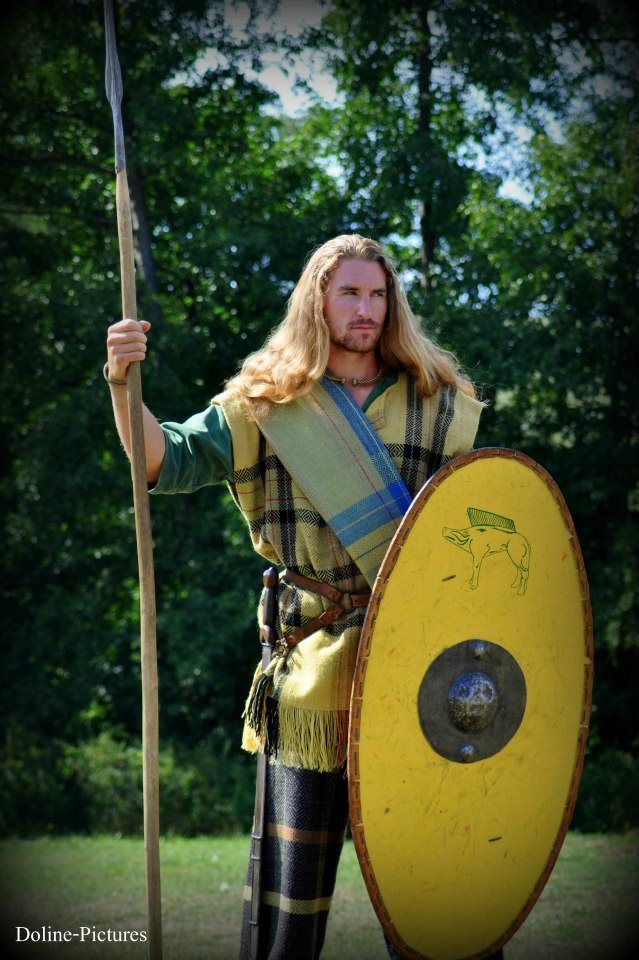 It is the only one performed as a solo. It differs from other Irish dances in that it allows free movement of the arms and it is flat down with the heavy weight on the accented beat of the music.
It is the only one performed as a solo. It differs from other Irish dances in that it allows free movement of the arms and it is flat down with the heavy weight on the accented beat of the music.
Sean Nos Dancing is the only Irish dance that also allows the solo dancer to improvise the choreography simultaneously as the dance is performed. The taps consist of shuffles and brushes as the dancer moves across the floor.
Irish Two Hand Dancing
This style of Irish Dance was a predominant part of Irish socializing. It is performed much like Irish Set Dancing with the exception that is it danced to polkas, Irish hornpipes, waltzes and jigs. Like the Irish Set Dancing, it is performed by couples with specific choreographic dance patterns, although in Irish Two Hand Dancing the patterns are repeated.
In Irish Two Hand Dancing couples dance in a relaxed style while they tap their feet in shuffling, hopping and spinning motion.![]() By all appearances, when Irish Two Hand Dancing is performed on a large dance floor, the couples seem to be gliding along as they dance.
By all appearances, when Irish Two Hand Dancing is performed on a large dance floor, the couples seem to be gliding along as they dance.
Basic Irish Dance Steps
Ballet Up styles of Irish dance rely on several uniformly performed steps. The first comes from the ballet step, "chasse," which means to "chase." In this step the Irish dancer steps with the right foot while the left foot "chases" the right in three counts. This is often called the "1-2-3."
Another step borrowed from Ballet is the "cabriole" which is to leap into the air while the left calf beats under the right calf that is extended forward in the air. There are several other steps that require the dancer to perform full or half turns.
In Flat Down Irish dance steps, the dancer's foot strikes the floor in a twisting shuffle of the right foot while hopping into the air with the left foot.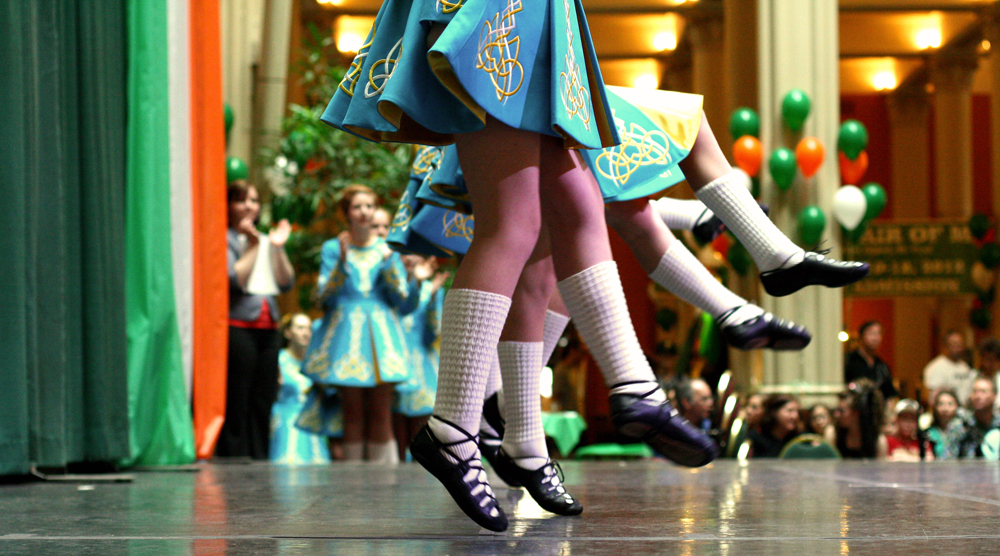
There are also combinations of Irish dance steps that include the "1-2-3", shuffle, stamping the whole foot and tapping one toe behind the other foot that holds body weight.
Although traditional Irish dance limits movement of the arms, today's modern Irish dancers are seen starting a dance routine with their hands on their hips and using certain movements of the arms that coordinate with music for interpretation of choreography.
Irish Dancers are as young as pre-school age to adult. There are numerous Irish Dance schools that teach traditional and modern Irish dance styles in the U.S. and Europe. The syllabus for Irish Dance is less complex than ballet, although several Irish steps originate from ballet.
Irish Dance is a combination of ballet and tap dancing. Although, it can be said that tap dancing originated from Irish flat down dance technique.
Unlike ballet, however, Ballet Up dance steps require dancers to place full weight on their toes in ghillies that are not blocked as ballet pointe shoes are.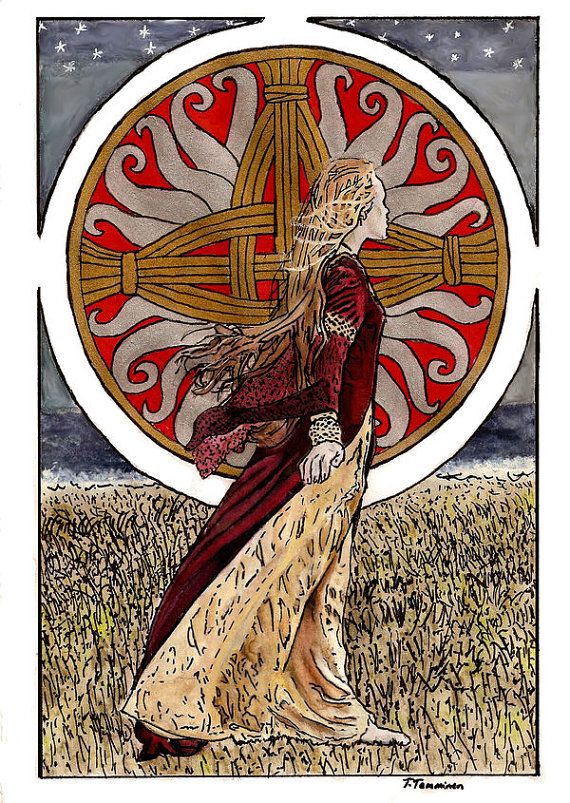
In Flat down dance steps, the shoe is more flexible across the front of the shoe than a traditional tap dance shoe. This enables the Irish dancers to perform shuffling steps with more speed.
Irish Dance Today
The first international reintroduction to Irish Dance performances was with the performance of "Riverdance", composed by Bill Whelan.
The first performance was in 1995 in Dublin. It starred the now famous Irish Dancer and Irish Dance choreographer, Michael Flatley.
Although, it predominantly features Irish step dancing, "Riverdance" has a Baroque style that incorporates other dance styles like flamenco and a Russian dervish. The end result for dance experts is that "Riverdance" provides insight into how dances are linked in technique and styles.
It has since been performed as a touring Irish Dance show in New York City and at the Vatican for Pope Francis.
In addition to "Riverdance," Michael Flatley choreographed his first full length Irish Dance performance in which he starred, in "Lord of the Dance.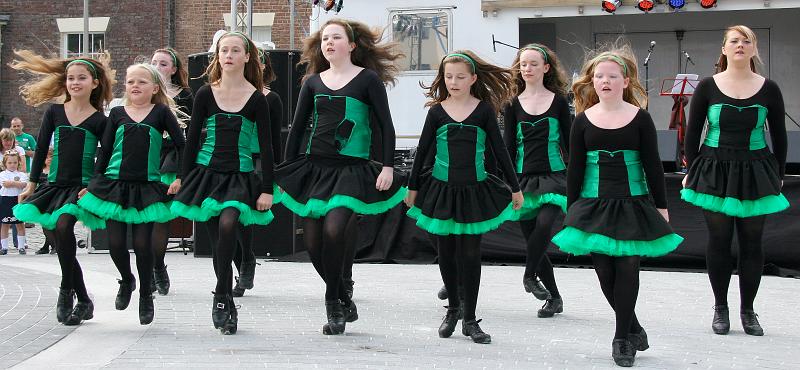 " This was followed by "Feet of Flames" and "Celtic Tiger Live." These are modern Irish dance shows that include Ballet Up and Flat Down Irish dance techniques.
" This was followed by "Feet of Flames" and "Celtic Tiger Live." These are modern Irish dance shows that include Ballet Up and Flat Down Irish dance techniques.
In "Feet of Flames," Michael Flatley performs a lengthy series of movements that seem to defy gravity, all while maintaining balance and musical timing.
However, in the Flatley shows, he included traditional Irish songs in the Gaelic language as well as actual story lines for each of his Irish dance shows. For example, in Lord of the Dance, the story line has both a romantic and a fairy tale plot that includes a whimsical fairy piper.
As a result of the addition of a Gaelic singer and two Irish talented Irish fiddlers in these shows, similar Irish entertainment emerged from these Irish performances such as "Celtic Woman" and "Irish Tenors."
All of these Irish performances include some of the most extraordinary dance talent and shows the extreme skill needed to maintain Irish dance choreography as well as a semblance of acting talent.
There are also Irish Dance Championships that encourage students of Irish Dance to take part in competitions for awards for their dance techniques, skills and choreography.
Conclusion
There is no doubt Irish Dance captures the attention of audiences wherever it is performed. There are also many Irish societies and organizations that help promote Irish dance performances like the Ancient Order of Hibernians, Milwaukee St. Patrick's Day Parade, Friendly Sons of the Shillelagh and the World Irish Dance Organization. Today, Irish Dance is seen in the Thanksgiving Day Macy's Parade as well as the St. Patrick's Day parade in New York City and Chicago.
Celtic Traditions: All About Irish Dance
Celtic Traditions: All About Irish DanceHome> Celtic Resources> Celtic Traditions: All About Irish Dance
There are many forms of Irish Dance and we try to cover them all here in detail and provide you with plenty of other useful dance resources.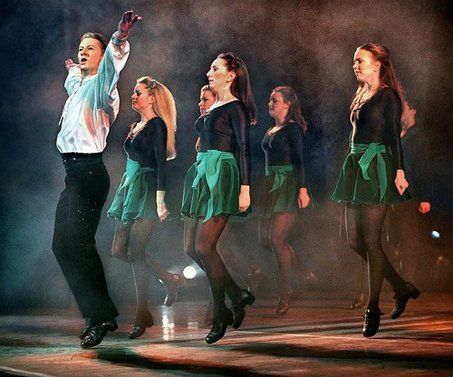
Dancing is a strong aspect of Ireland’s culture. The distinctive footwork is a novelty for outsiders and often draws exclamations of enjoyment. The show Riverdance is primarily responsible for making Irish dance widely popular in the last two decades. However, traditional Irish dances existed for centuries earlier. Read on to learn about this wonderful and expressive art form!
Ceili dancing traces its roots back several centuries to the start of the 1500s.
Ceili Dancing
Ceili dancing traces its roots back several centuries to the start of the 1500s. It is a folk dance for several couples. Each couple dances together as well as with the group, often swapping partners. In ceili dancing, extended limbs and pointed toes are heavily featured.
Set Dancing
The quadrille, a popular court dance was adapted into set dancing for rural areas. It typically requires four couples arranged in a square pattern. Two couples at a time then cross through the square to exchange positions. Unlike ceili, the dancers mostly use the entire flat portion of their feet, save for a few low kicks and flourishes.
Unlike ceili, the dancers mostly use the entire flat portion of their feet, save for a few low kicks and flourishes.
Stepdance
Stepdance is an Irish dance for individuals or groups. Although it is sometimes danced in couples, this is not a requirement. In stepdance, the dancers keep rigid upper bodies. This specifically contrasts with their feet and legs that move through a succession of very fast hops, high kicks and complex footwork.
Riverdance
Riverdance is not a type of Irish dance. Rather, it is the name of a commercial stage show that features large groups of professional setdancers. Through dance, music, and light, the performance relates Irish stories to the audience. While the show originated in Ireland, it grew to tour worldwide.
Sean-nós Dancing
Sean-nós is extremely distinctive by its footwork which tends to stay parallel and mostly touching the ground, as opposed to the other Irish dances. The upper body is also more relaxed, with swaying hips and arms. Improvisation is encouraged in Sean-nós, so it is far less formal or organized. This dance is also usually done individually.
Improvisation is encouraged in Sean-nós, so it is far less formal or organized. This dance is also usually done individually.
Traditional Irish Music
Most traditional folk music in Ireland was specifically composed to be danced to. This is one of the reasons why it is so uniquely rhythmic. Instruments most often include bodhráns or other percussion, banjos, fiddles, accordions, pipes and flutes. Music used for traditional dances usually does not feature singing.
Costumes and Shoes
In earlier times, people simply donned their best clothes for dancing. Today, Irish dancers wear a variety of costumes for stage shows and competitions. Female dancers may wear dresses with a short hemline that are often decorated with Celtic knot work embroidery or sparkles. Solo dresses are form-fitting, with stiff skirts and long sleeves. Men might wear dancing trousers along with a button-down shirt and sometimes a vest. Dancers can wear soft shoes (for women), which are akin to ballet slippers, reel shoes (for men) that are somewhat like leather jazz shoes, or hard shoes which are similar to tap-dancing shoes.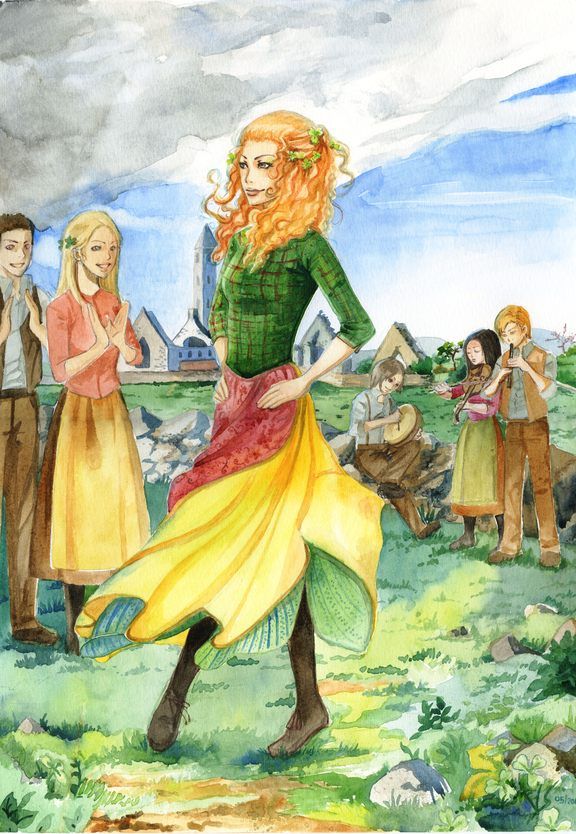 The shoes that a solo dancer wears are heavily influenced by the type of dance they are performing. Dances like the slip jig, the reel, or the single jig are ideal for soft shoes. On the other hand, heavy reels or treble reels require hard shoes to produce the loud tapping noises.
The shoes that a solo dancer wears are heavily influenced by the type of dance they are performing. Dances like the slip jig, the reel, or the single jig are ideal for soft shoes. On the other hand, heavy reels or treble reels require hard shoes to produce the loud tapping noises.
Dance Competitions
Irish dancing competitions are known as a feis (or feiseanna for several). It divides competitors by age range and experience. The dancers are not only judged according to their technical skill, but also for their stylistic movements, shoe sounds, and timing. There are plenty of dance competitions in Europe, as well as other areas such as the United States, Canada, and Australia.
- Céilí Dancing – Read a general introduction to céilí dancing and how it is performed.
- Set Dancing – Guide introducing Irish set dancing with details on patterns and organization of the dancers.
- Set Dancing for Two Couples – Follow detailed instructions to learn how to do a set dance.
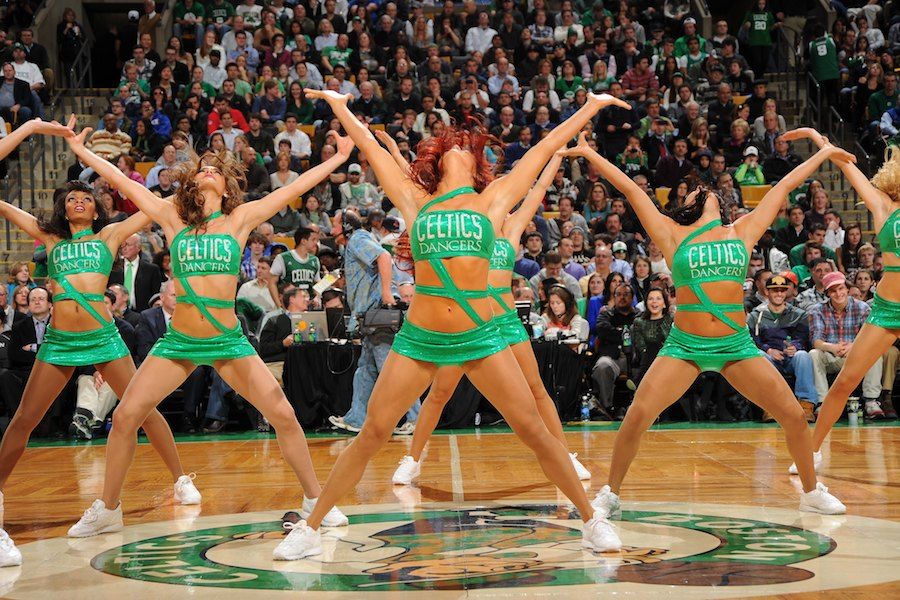
- Irish Dance Tips – This guide offers information on warm-ups, nutrition, injury prevention and more.
- Irish Dance and Music – Compare the differences between various Irish dances and music styles.
- Sean-Nós Dancing – This quick introduction discusses Sean-Nós and how it is danced.
- Irish Dancing Magazine – Online magazine with articles, recommendations, and a forum for fans of dance.
- Costumes and More – See what Irish dance costumes looked like in previous eras.
- Dance Dresses – An article on the evolution of Irish dance dresses.
- Evolution of Irish Dance – Track the gradual changes in Irish dance from the 1500s to today.
- Irish Dance Instructions – A comprehensive list provides footwork and group formation instructions for a huge number of Irish dances.
Did You Know?
In the 18th century rival dance masters would also challenge each other at local fairs – dancing until one collapsed from exhaustion.
Irish step dancing is believed to have evolved 2,000 years ago from dances that were performed by Celtic druids in celebration of oak trees and the sun.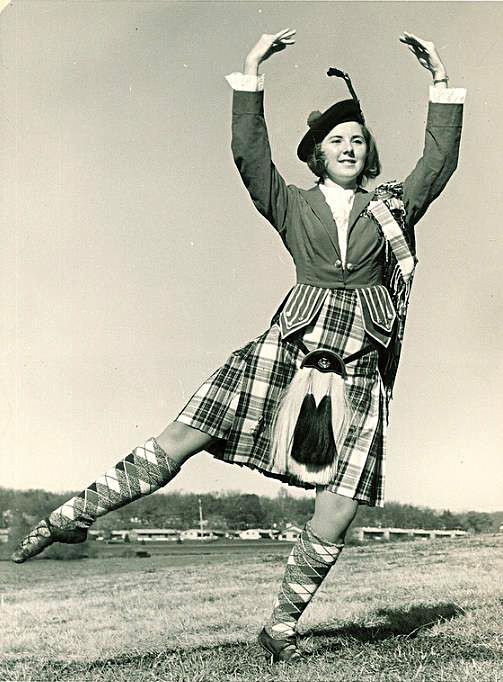
Back to Celtic Resources
Updated by:Steven Forsyth
Monday to Friday
+1800-350-9962
- Irish Business Hours:
- 9:30am - 5:30pm GMT
- United States (EST):
- 4:30am - 12:30pm
- Pacific Time:
- 1:30am - 9:30am
Subscribe to our
NewsletterStay always up to date and never miss a deal again
Payment & Shipping
↑
Irish dancing | Celtic Style
Art, •Recommended | 7 comments
Irish dance - a whole group of traditional dance forms that originated in Ireland - is divided into domestic (public, social) dances and concert dances (theatrical dances or staged dances, as they are commonly called in the UK). Public or domestic Irish dances - caylees and set dances . Stage dances are traditionally called solo dances.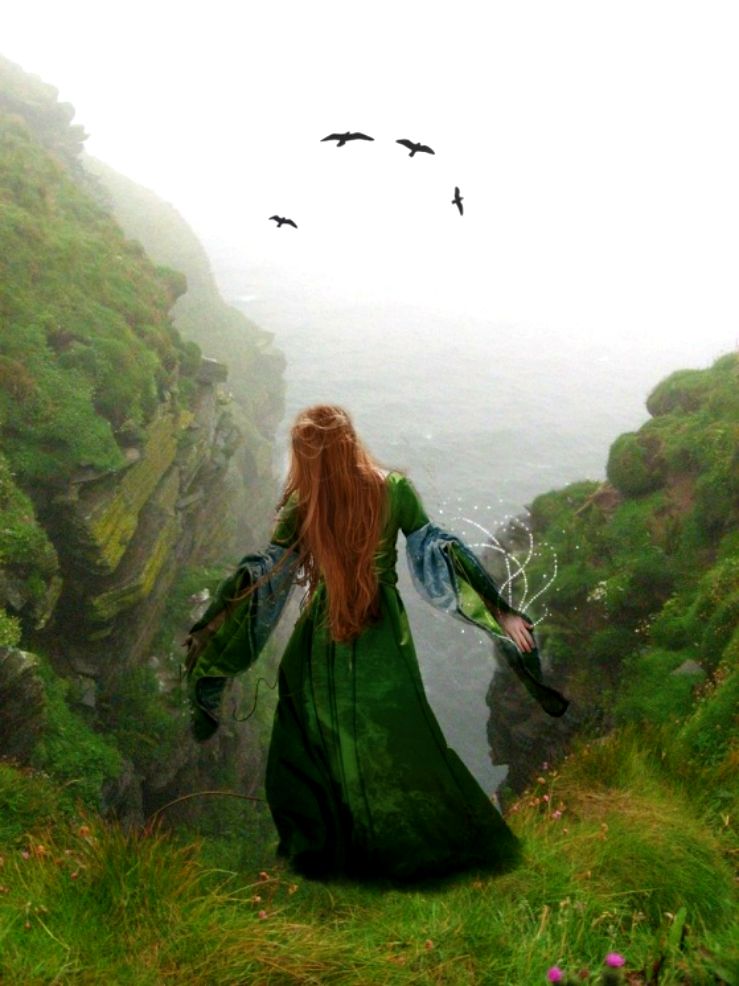
The history of Irish dance
The earliest evidence of Irish dancing dates back to a time of constant movement of various peoples through migration and invasion of Irish territory. Each of the peoples brought with them their preferred types of dance and music.
There is very little evidence of the development of Irish dance in the most ancient history, but there is evidence that the Druids practiced "circular" dances to perform religious rites dedicated to the Sun and the Oak, signs of which are clear today.
When the Celts invaded the Irish lands, coming from Central Europe, they certainly had their own forms of folk dance. After the introduction of Christianity, the monks illustrated consecrated manuscripts with pagan Celtic symbols, and the peasants preferred to preserve the pagan spirit in music and dance.
The Anglo-Norman conquests in the twelfth century respectively influenced the customs and culture of Ireland. Music Carol , popular among the Normans, was the following form: the soloist performed a song surrounded by dancers who echoed the same song to him.
Sixteenth century records attest three basic Irish dances :
- Irish "Hey" (dancers circling partners)
- Rinnce Fada (long dance)
- Trenchmore (old peasant dance)
In one of the letters of the English representative in Ireland, Sir Henry Sidney to Elizabeth I in 1569, there are references to girls performing an Irish jig in Galway. He wrote that they were very beautiful, splendidly dressed and danced first class.
In the middle of the sixteenth century, dancers were invited to the great halls of newly built castles. Some dances were adapted by the English colonizers to be performed in the royal halls of Elizabeth, such as "Trenchmore" and "Hey".
When the Royalists sailed on a ship to the shores of Ireland, they were met by girls who performed an Irish folk dance, and King George III - in 1780 in Kinsale (Cork) was met by three couples. They stood in a row and held a white handkerchief. As soon as the music started, they moved out and formed separate pairs. At first, the couples danced with a scarf at a slow pace, then the pace increased and the dance became more and more energetic.
They stood in a row and held a white handkerchief. As soon as the music started, they moved out and formed separate pairs. At first, the couples danced with a scarf at a slow pace, then the pace increased and the dance became more and more energetic.
Irish dancing was accompanied by bagpipe and harp music. In the households of the Anglo-Irish aristocracy, the masters often joined with servants to perform certain dances. They danced even in the morning after waking up or during funeral processions, following in a circle to the sad sounds of bagpipes.
Dance teachers appear in Ireland in the eighteenth century. Mostly, they were traveling people, they moved from village to village and taught the locals the basic dance steps. The teachers were colorful characters, dressed in flowery clothes, and often had assistants.
Due to illiteracy, many students could not tell where the left or right foot was. To do this, the dance teacher tied straw to one leg, hay to the other leg and taught like this: “raise your leg with hay” or “raise your leg with straw.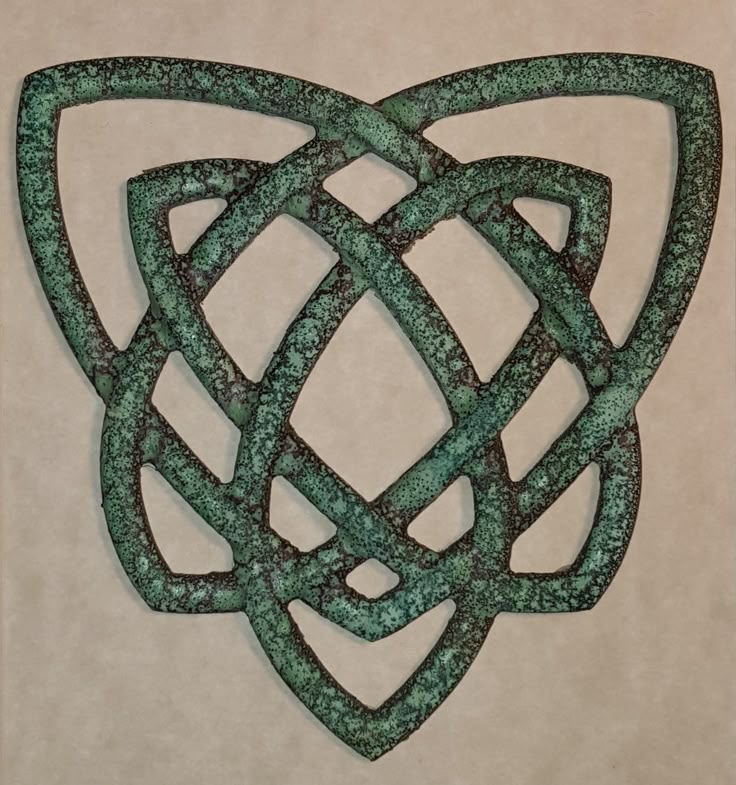 ”
”
Mostly each teacher had his own district, and he did not encroach on other people's "dance" possessions. The level of performance of the most gifted students was very high, and solo dancers were held in high esteem. Often the doors were taken off their hinges, laid on the ground, and the dancer performed a dance on them.
Open dance competitions were held at the fairs, where the competition continued until one of the dancers collapsed from fatigue.
Several variations of those dances are still performed in various parts of Ireland. The rich heritage in the form of dance forms is carefully preserved and today Irish jig, reel, hornpipe, sets, polkas, step dances are known all over the world. Solo dances and step dances appeared at the end of the eighteenth century.
Irish dance costumes
Dancers' costumes today are just a reminder of the old dance costumes.
Men in the past usually wore a highly buttoned waistcoat, tie, breeches, stockings and shoes.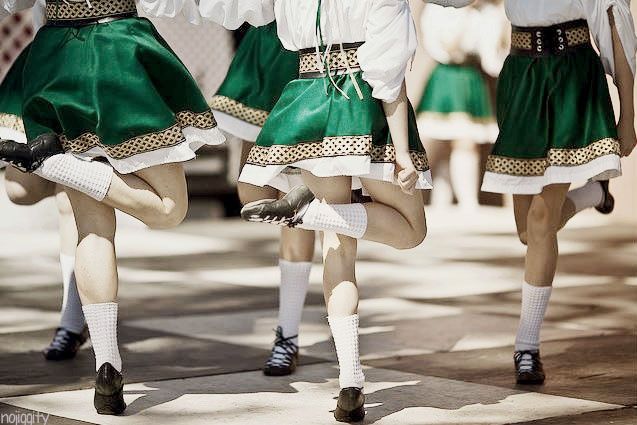 Ladies wore colored homespun ankle-length skirts and black bodices.
Ladies wore colored homespun ankle-length skirts and black bodices.
Every school these days is distinguished by its original costumes. Most of the dresses are embroidered in the Celtic style, replicas of the famous Tara brooch, which pins a cape thrown over the shoulder onto the back.
Men's clothing is less decorated but has a rich history. Often it is a plain-colored kilt, a jacket with an intricately draped cloak on the shoulder. Shoes - for both men and women - heavy hard boots with heels for hornpipe, jigs, for reel - soft "ballet" shoes.
Irish Dancing Today
Today Irish Dance is a cultural symbol of the country and it is understandable that there are many dance organizations in Ireland that encourage dancing. Adults and children participate in separate competitions called "fesh" (feis, once the village dance parties were called) for valuable prizes. There are solo performances and group performances-competitions, in which dancers are determined by age groups, from six years to seventeen years old, and groups of the senior category.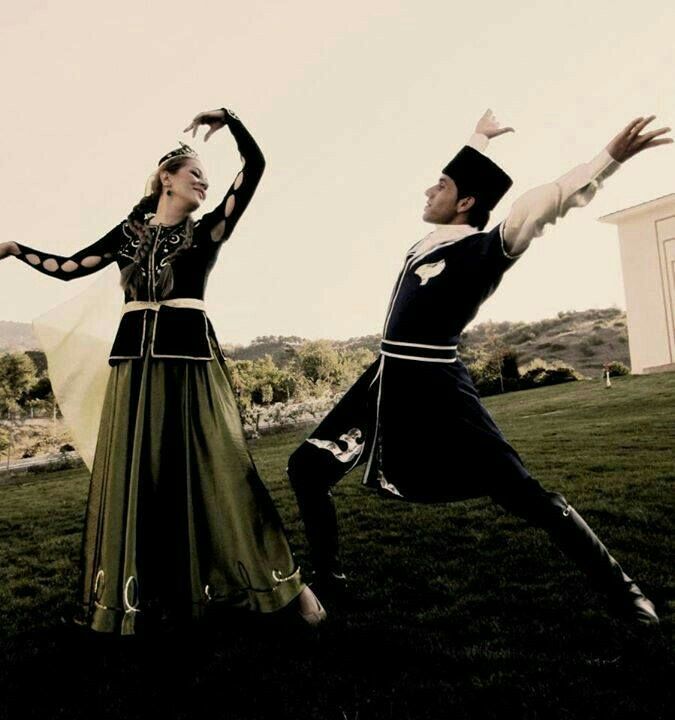
Trials are held in all four provinces of Ireland and the winners then compete in the entire Irish Championship. The Irish Dance World Championship takes place in Dublin on Easter, and representatives from England, Ireland, the USA, Canada, Australia, and New Zealand compete for the title of world champion.
Keighley
The history of the Irish "Keighley" begins with gatherings of neighbors for a pleasant time, with music, dancing and friendly conversations.
Dance evenings were usually held on summer Sunday evenings when young people gathered at the crossroads. The music was performed by a violinist sitting on a three-legged chair with his hat turned upside down to collect donations. The violinist usually started with music for reel, but had to repeat the melody several times before the young people began to dance. But after a while the area filled up, and then the dancer could not stop.
In Ireland today there are many opportunities to enjoy Irish dancing.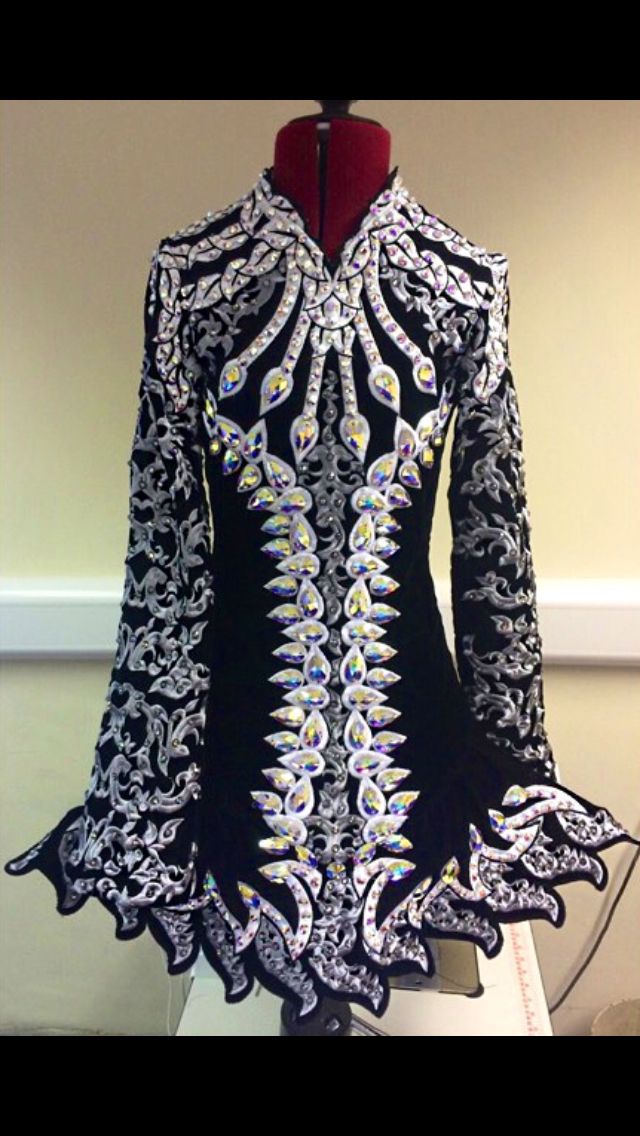
Informal dance evenings, “keili” sessions, when newcomers are shown the first steps, are held in large cities during the summer season, in which both the older generation and the youth take part with equal contentment.
Thanks to the professional dance show Riverdance, the amazing Michael Ryan Flatley and his stunning Lord of the Dance and Dance Feet of Flames shows, today Irish dance is not just known all over the world. Students continue to come to dance schools in order to achieve the same recognition in the future as Gene Butler, Colin Dunn or Michael Flatley.
Ella Mikhailenko
Celtic style © 2010-2012. Copying materials is prohibited.
Direct indexed link to the site Celtic style when quoting is required .
Celtic dance music
Returning to the topic of dancing at concerts, let's remember the crazy "engines" of people thirsty for dance, but who can't dance.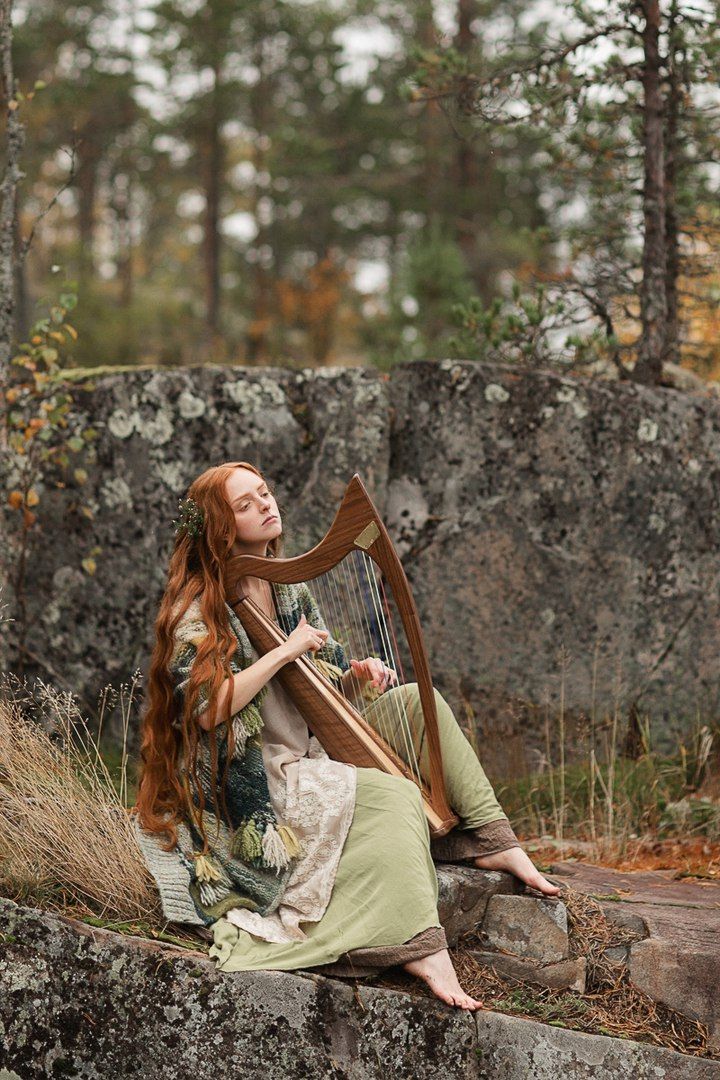 Let us also remember those who dance something jig-like under ril music. And absolutely wonderful shots - couples dancing Ecossaise to the music in size 4/4. We will not replenish their ranks, but we will figure out what kind of music we have.
Let us also remember those who dance something jig-like under ril music. And absolutely wonderful shots - couples dancing Ecossaise to the music in size 4/4. We will not replenish their ranks, but we will figure out what kind of music we have.
To reduce the size, the examples are compressed into 24 kbps mono, some compositions are trimmed in time. All melodies are presented for informational purposes only.
If you see non-working links - I know about them, in the near future I will pinch and upload.
Intro
We will talk here not only about Celtic dances (because no one really knows what it is), but rather about Kielce :-) This will include both actually Irish - jigs, reels, etc., Breton chains, and borrowed from Europe - waltzes, mazurkas, even horse branles. In short, Kielce dances - everything that is taught in Kielce schools dance :) and in HDDS - in particular. I will also say that we will separately consider dances Irish / Scottish and separately - Breton.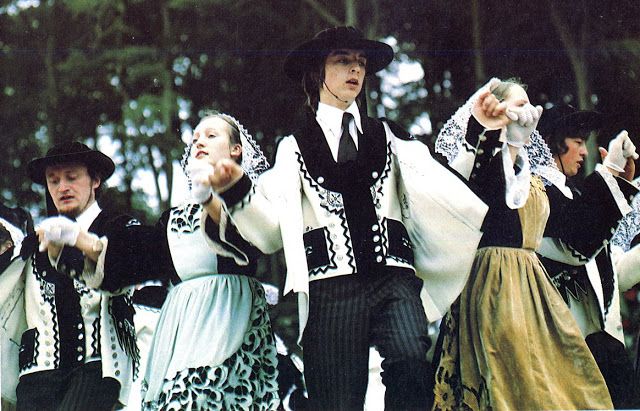 Most Breton dances, especially the chains, dance to authentic music - melodies with characteristic accents, specially written for certain dance. With Irish melodies it is a little easier - there are much fewer types of them.
Most Breton dances, especially the chains, dance to authentic music - melodies with characteristic accents, specially written for certain dance. With Irish melodies it is a little easier - there are much fewer types of them.
About stress, music and poetry
Read any poem aloud with expression. It can be seen that there are two differences between verse and prose. - firstly, rhyme, but most importantly - a special rhythm. The stresses in the text of the poem follow through clearly given number of syllables. Depending on the distribution of stressed and unstressed syllables, different verse dimensions. About this - not here :-)
The same thing happens in music. In a simple monophonic melody, some notes are played a little stronger, than the rest. Strong notes are a kind of musical stress. Between strong notes, there are weaker ones and the weakest notes.
A measure is a chain of notes from the strong note to the next strong note. It's part of the music elementary rhythmic part. Time signature is determined by the number of notes in a measure, and distribution of stresses between them.
Time signature is determined by the number of notes in a measure, and distribution of stresses between them.
There are simple and compound sizes.
In simple meters there are only percussion and unstressed notes. Striking (strong) note denotes the beginning of the measure, unstressed (weak) notes fill the measure. In complex time signatures, there is one strong note per measure, with which it begins, and within the measure notes are more percussive and less percussive. It is better to see this with an example, say, a jigs.
Time signatures are written as fractions. The numerator is the number of notes in a measure. In the denominator - duration of one note. For example, a time signature of 12/8 means that there are 12 notes in a measure of 1/8 each, of which the first is strong.
By the way, duration is a very arbitrary thing. Most often in faster melodies they write (jiga, castarvat, or, for example, samba), that the duration of the notes is 1/8. For slower tunes (waltzes, mazurkas, tango) - 1/4.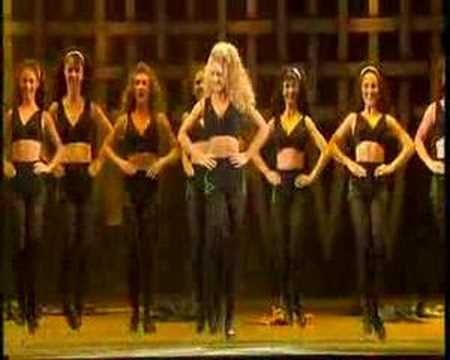 The duration of the note is always even, in the denominator of time signature it doesn’t happen, 3 or 6, but there are 4 and 8, less often - 2 and 16.
The duration of the note is always even, in the denominator of time signature it doesn’t happen, 3 or 6, but there are 4 and 8, less often - 2 and 16.
How to determine the time signature? The surest way is to count out loud. First you need to hear stresses in music - they correspond to the account "ONE!". Weaker notes will correspond to more weak scores "two", "three" and "che". (why “che” and not “four” - because it’s more convenient for a short note put one syllable :) )
The simplest size in which all pop music is written is 4/4. It can be counted out loud as "ONE-two-three-che." Another simple measure is the waltz - 3/4. You can count it out loud "ONE-two-three."
More complex time signatures are obtained by allocating one even more time signature to several measures. strong note. For example, if in 3/4 time in odd-numbered measures "ONE!" will be stronger than "ONE" in even measures (I reflect this with the sign “!”), Then it will turn out to count the music out loud like this: “ONE! Two-three-two-two.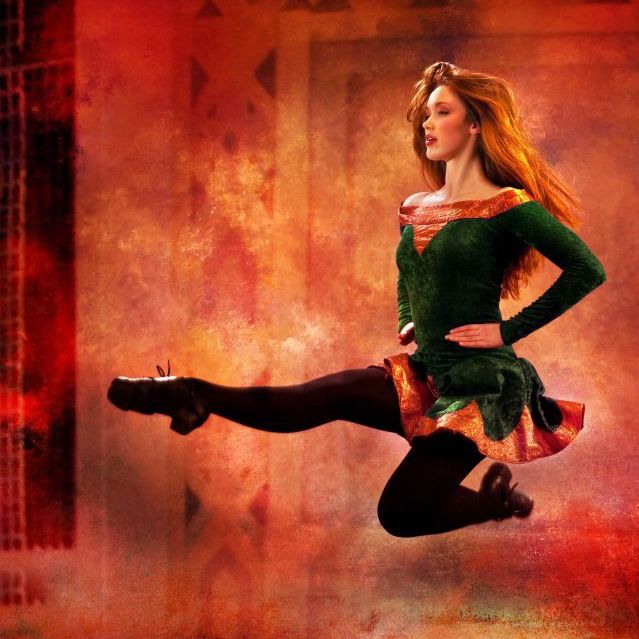 ” This is how the meter 6/8 appears - a strong note at the beginning of the bar, a little less strong in the middle, between them - two weak notes.
” This is how the meter 6/8 appears - a strong note at the beginning of the bar, a little less strong in the middle, between them - two weak notes.
Whatever the dimensions are, they are in one way or another a multiple of 3 or 4 (or 2). It can be said that musical dimensions are either "square" or "triangular". Accordingly, the number of steps in the dance is a multiple either 3 or 4 (or 2). So waltzes, mazurkas are "triangular" and are danced in three steps. jigs, reels, hornpipes - "square", danced in four (or two) steps. Poles - two steps.
More sizes later. And now - about the squares.
What is the SQUARE (about music and geometry)
For starters, music consists of “verses” and “refrains”. What is different is the melody. Musical the size remains unchanged always throughout the composition. So, if we take any polka or waltz as an example ... at least from Dartsov. Every line in it contains 4 bars. Verse - 4 lines - a total of 16 measures and a chorus of 16 measures. Verse plus chorus form a "square" of 32 measures.
Verse plus chorus form a "square" of 32 measures.
I must say right away that from a strictly musical point of view, all of the above is not entirely true. How can read in the article for musicians [1] (see link at the end) - a square is AABB or ABAB, where A and B - musical pieces with a duration of 8 measures (these same A and B can be called "verses" and "choruses". But for us dancers it's hard :) 32-bar (big square) piece of music. And what to take for a square depends on the duration of the composition specific dance. If it is 16 measures long, as in Ecossaise, you can start the dance from the first syllable of the verse or from the first syllable of the chorus - then it will be impossible to get confused, because the drawing dance entirely fit into the "verse" or "chorus". If the dance pattern has 32 measures - it is better to start the dance from the beginning of the verse. To do this, in the descriptions of all dances, I indicate its duration. in beats to music.
So how the hell do you know what music is playing?
Count out loud.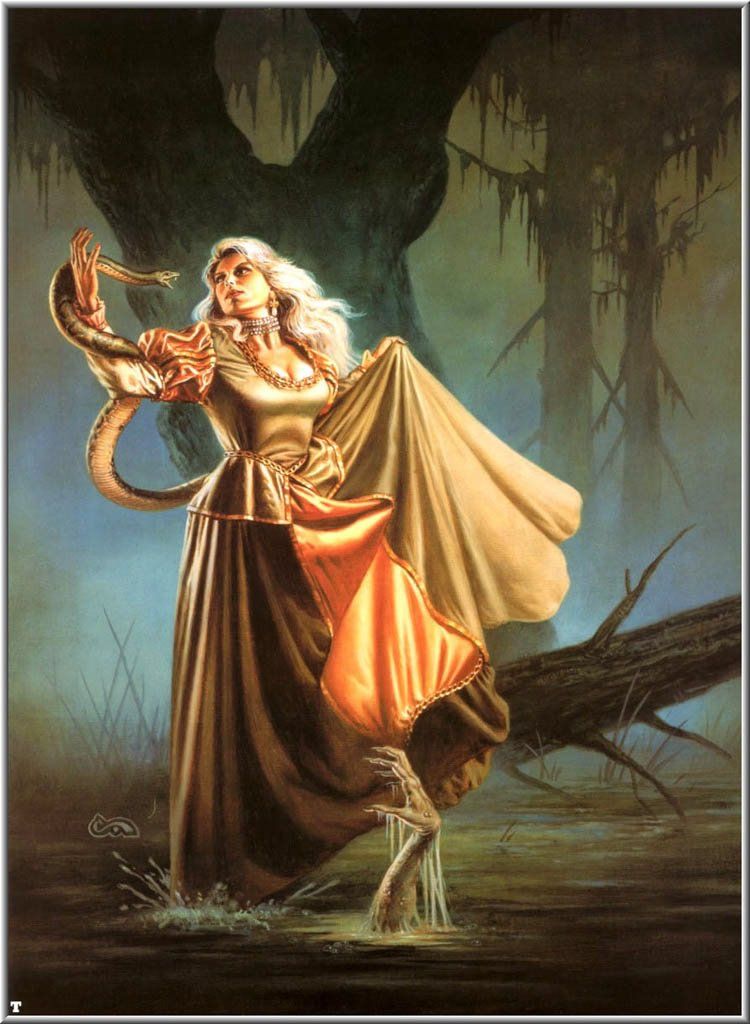
Jig, slip jig, reel, hornpipe, etc. Types of music are a combination of three aspects: musical meter, tempo, and accents. Accents - they often determine the perception of music. The fact, that, in contrast to a monophonic melody, in polyphonic :-) music, the time signature cannot unambiguously define the nature of the music. Therefore, we will understand with examples, and I will try, where possible, in words to tell what these very accents are, and how to hear them.
Jig - fast melodies in 6/8 time. This is the most common size and is called double-jig , or just "jig". Music for a jig can be calculated by voice as "One two three - one two three - one two three - one two three".
It is much rarer to hear a 12/8 jig - this is called Slide or single-jig . In fact, it is difficult for a non-musician to understand the difference between 6/8 and 12/8. In general, the slide sounds like longer musical phrases.
Jig comes in different speeds.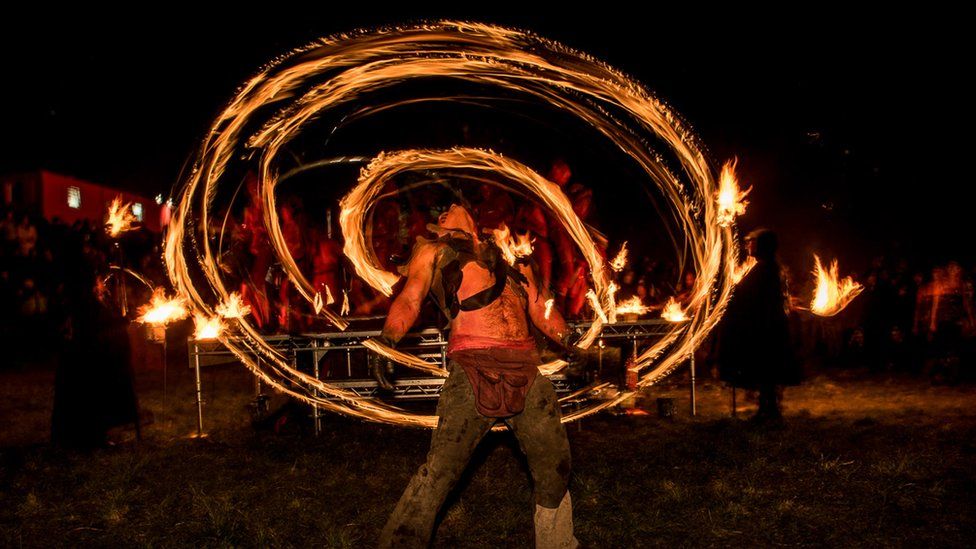 I must say that double-jig can be clapped, but calculated all twelve notes are difficult with her voice - she is fast enough.
I must say that double-jig can be clapped, but calculated all twelve notes are difficult with her voice - she is fast enough.
Treble-jig . So they call the same jig in the amount of 6/8, only slower. Her music can it is already easy to calculate aloud, and a low tempo determines the nature of the dance - a simple circular or Breton jig to the music of treble-jig is not interesting to dance - slowly. Dancing to a slow jig in hard shoes the eponymous dance.
Slip-jig . Exclusively solo and exclusively female "sliding" jig. Music size - 9/8. That is, it can be calculated as "One two three - one two three - one two three."
Reel . This word means "spinning wheel". Music has a time signature of 8/8 or 4/4, which is basically the same and also. Why is that? Most often it is possible to hear reels where there is a solo instrument (violin, flute), which brings out a fast ornate melody, and there is a percussion (tambourine, drum, etc.). In every measure 4 beats, which can be counted out loud "ONE!-two-three-th".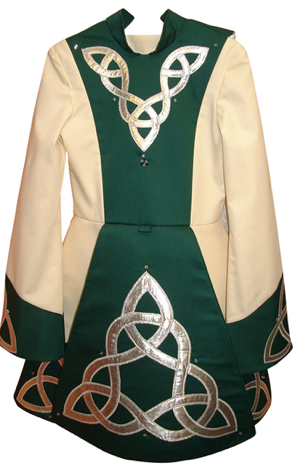 And the solo winds twice as fast and 8 notes are placed in each bar, that is, there are 2 notes per beat, every second note is weaker than the first. It is unrealistic to calculate all 8 notes of the melody - too quickly. Therefore, how to record the size is the business of musicians. It is not difficult to determine the reel by ear - this is a melody that seems to be flying forward and winding like threads along a straight row of pegs - beats of music, without much flying away to the side. "We" say that it is cheerful and groovy music; "they" will say that this is a bore that endlessly saws and saws on one note :-) .
And the solo winds twice as fast and 8 notes are placed in each bar, that is, there are 2 notes per beat, every second note is weaker than the first. It is unrealistic to calculate all 8 notes of the melody - too quickly. Therefore, how to record the size is the business of musicians. It is not difficult to determine the reel by ear - this is a melody that seems to be flying forward and winding like threads along a straight row of pegs - beats of music, without much flying away to the side. "We" say that it is cheerful and groovy music; "they" will say that this is a bore that endlessly saws and saws on one note :-) .
Hornpipe . The youngest of the dances, named after an old wind tool. The music is in 2/4 time. The emphasis is on the first and third notes. Peculiarity in the fact that in each bar one of the notes is played by a triplet - that is, a note (with a duration of quarter) is replaced by a trill of three very short notes (each 1/16 in duration). Except When you listen to hornpipe music, you get the impression of a leisurely waddle. If you count the music aloud, then between the scores you can still distinguish "half-counts" (I know, the concept non-musical, but many understand it that way). You get something like "ONE!-and-two-and-THREE-parapam-and", where "parapam" is just a triplet. In short, under the hornpipe we always dance Scottish - and his movements are perfect for the music. Also Palais Glide (Drunken Scots) is also a hornpipe.
If you count the music aloud, then between the scores you can still distinguish "half-counts" (I know, the concept non-musical, but many understand it that way). You get something like "ONE!-and-two-and-THREE-parapam-and", where "parapam" is just a triplet. In short, under the hornpipe we always dance Scottish - and his movements are perfect for the music. Also Palais Glide (Drunken Scots) is also a hornpipe.
To complicate things, I will additionally say that the triplet is not necessarily the fourth note of the bar, it could be any of the notes. So four bars might well sound like this: "ONE-and-two-and-three-parapam-and-ONE-and-two-parapam-and-che-and-ONE-parapam-and-three-and-che-Parapam-and-two-and-three -i-che-and ".
Breton dances
Everything is more complicated here. The fact is that most Breton things are danced to their own special music.
Breton Bourre is danced to the music of the bourre, which seems to be in 4/4 or 12/8 time. At the same time, she there is neither reel nor jig, due to certain specific accents and rhythms.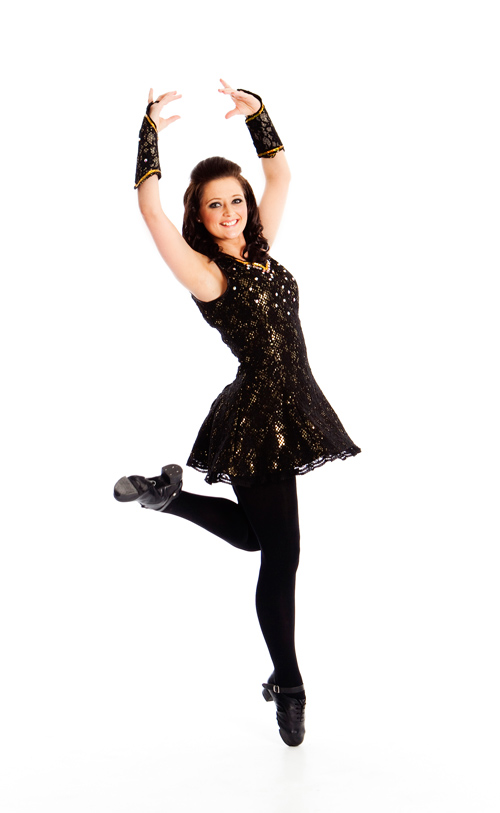 The music seems to be "sharper" than for a jig and somewhat slower. Bourre can be danced to hornpipes.
The music seems to be "sharper" than for a jig and somewhat slower. Bourre can be danced to hornpipes.
Bourre St. Patrick - not everything is clear either. It does not fit well with the music for the Breton burre. In general, it can be danced to any clearly accented music in 4/4. Here is an example of such accented music - First Violin of September from The Dartz. Or from them - I'm resting!
Breton chains usually have their own special music. Musicians at concerts announce what kind of dance going to play.
An Dro just cheerful mood.
For Hunter Dro the music is very characteristic, in 3/4 time, with a rather slow score, but seeming fast due to the ornate melody. I don't have the original composition. however, The Dartz wrote the song Turn the Page to its motive. By the way, the original melody - from the group Tri Yann was called Hunter Dro Macabre.
Rond de Saint Vincent is 4/4 or 8/8. Here is an example from Karma - Rond de St.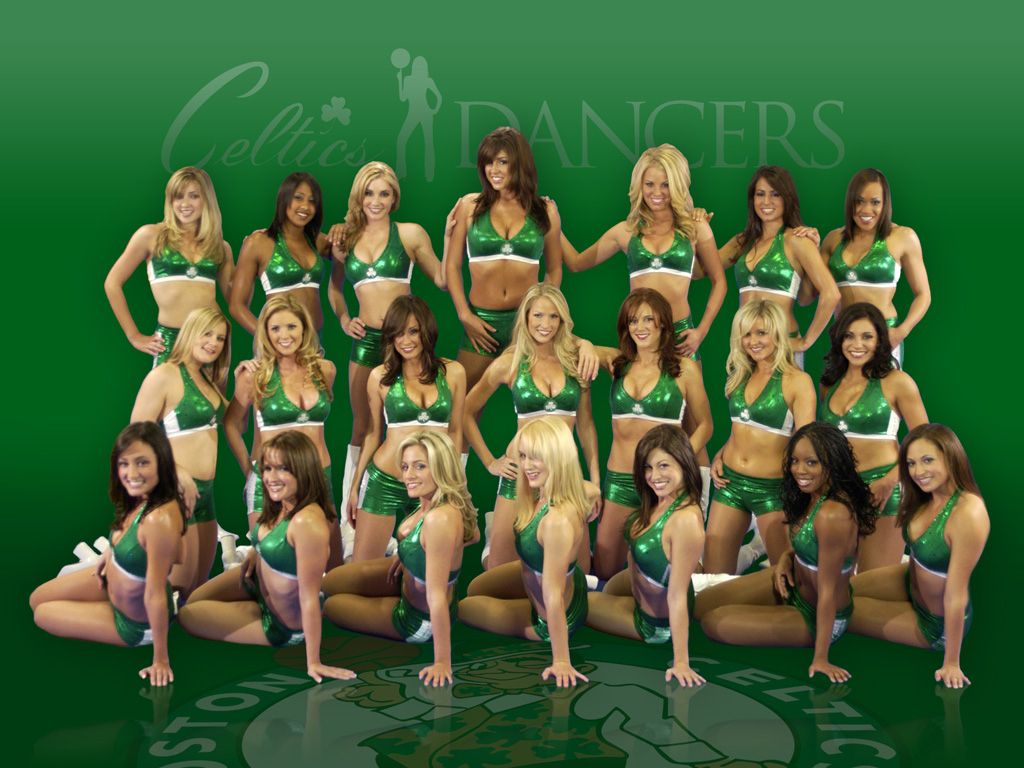 Vincent
Vincent
Ridee 6 temps - characteristic melody in 3/4 time. Only these are very unusual three quarters =) - each quarter is also divided in half, resulting in 6 identical according to the duration of the accounts "ONE-two-three-and-five-and", where the "and" is a croise. Melody example - Laride by Reelroad.
Kastarvat . Fairly fast melodies in 4/4 (8/8) time. An example is Kost ar C'hoat by Ar Re Yaouank. Or, for example, Francoise from Dartsov.
Kazabar . Another dance on 4/4 (8/8). In short, here is the authentic example =) Kas a Barh by Skedus
Plynn dance to special music in 4/4 score "1-2-3i4". Pop Plinn by Mervent (only dans), and here is the ball - Bal Plinn du Vertige.
These were Celtic dance music forms. And now borrowed.
Polka . Size 2/4. What does it mean: beats the music does not go very fast, they can be counted out loud as "ONE-and-two-and." Sounds first count, then "half count" - it seems that the blows are "falling". The melody is very fast. and perky. Polka is easy to distinguish from other melodies.
The melody is very fast. and perky. Polka is easy to distinguish from other melodies.
Waltz . "One two Three". 3/4. The waltz, unlike other 3/4 dances, has a very smooth, it seems to “float”, smoothly and evenly, without “taking off” or “falling”, it is not possible to insert an intermediate half-count "and" between beats.
Mazurka . Has the same size and speed as the waltz - 3/4, However, it differs in the nature of the melody - for waltzes, the melody "floats", while the mazurkas seem to a little "torn". Each blow seems to "jump", which is reflected in the nature of the movements. The rhythm of the mazurka can be calculated (in contrast to the waltz) as "and-ONE-and-two-and-three", that is every account "takes off". And "half-counts" in the mazurka are formed not so much by a percussion instrument, how much solo.
Horse branle . A characteristic melody to which some bands made their arrangements.
Norwegian circular .